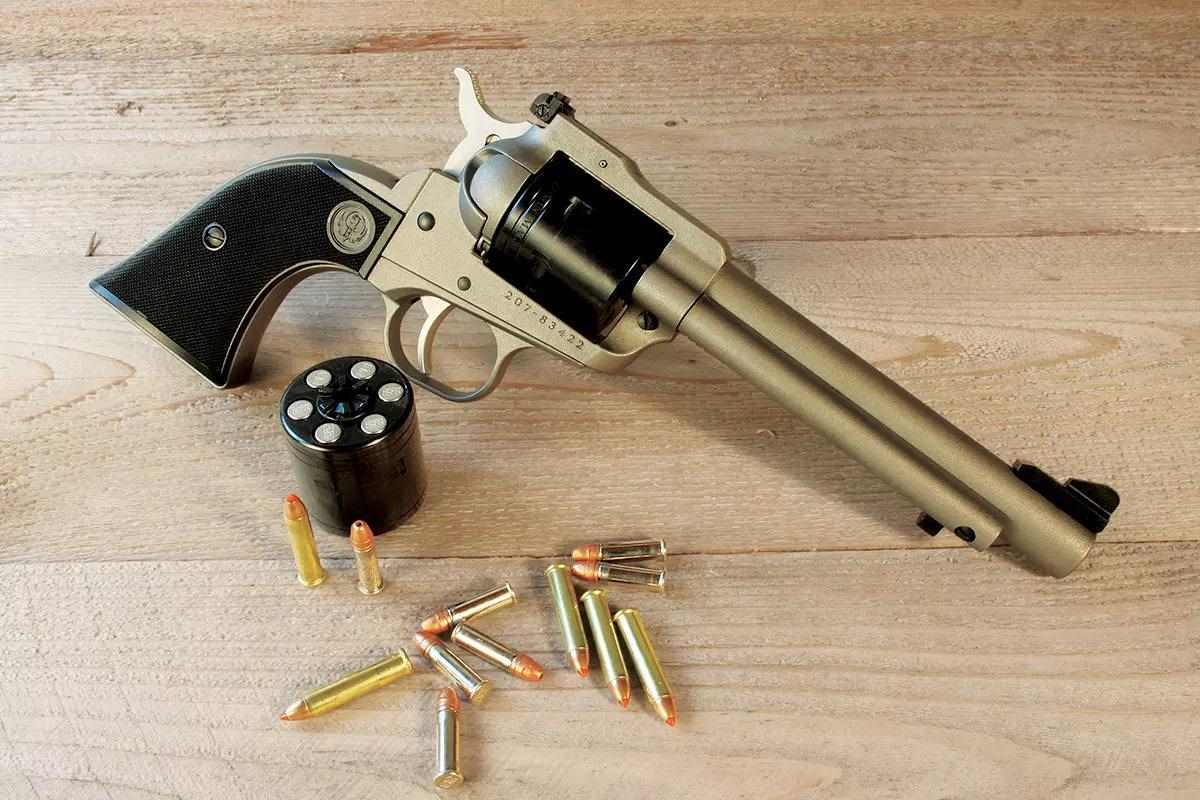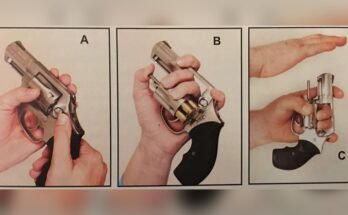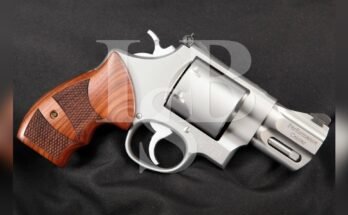Are you thinking about using a single-action revolver but wonder if it takes more practice to master? You’re not alone.
These classic firearms have a different feel and operation compared to modern guns. Understanding how much training you need can make all the difference in your confidence and accuracy. You’ll discover what sets single-action revolvers apart and find out whether investing extra time in practice is really necessary for you.
Keep reading to unlock the key to handling these iconic weapons like a pro.

Single-action Revolver Basics
Single-action revolvers have a long history and a unique design. Understanding their basics helps in learning how to use them well. These revolvers require a clear method to operate. They differ from other types in how you prepare each shot. Knowing these details is key for any shooter.
How Single-action Mechanisms Work
A single-action revolver needs you to manually pull back the hammer. This action readies the gun to fire. After cocking, pulling the trigger releases the hammer. The hammer then strikes the firing pin or primer. This process fires the bullet from the chamber. Each shot requires cocking the hammer first. The trigger only performs one action: releasing the hammer. This design makes the trigger pull light and smooth.
Common Uses And Popular Models
Single-action revolvers often serve in sport shooting and cowboy action shooting. Collectors value them for their classic feel and history. Some popular models include the Colt Single Action Army and Ruger Vaquero. These guns are known for reliability and simplicity. Their design suits slow, deliberate shooting styles. Many users enjoy the hands-on process of cocking each shot. This style teaches patience and control in shooting.

Skill Demands Compared To Other Firearms
Single-action revolvers require different skills than other firearms. They demand precise timing and careful handling. These guns do not have the same automation found in semi-automatic pistols or double-action revolvers. Learning to use them well often takes focused practice and patience. The skill demands are clear in areas like trigger control and reloading.
Trigger Control And Cocking The Hammer
Single-action revolvers need the shooter to cock the hammer before each shot. This extra step adds a layer of complexity. The trigger pull is usually light and smooth. It requires good finger control to avoid jerking. Pulling the trigger too fast or hard can throw off your aim. Timing the hammer cock and trigger pull together takes practice. This contrasts with double-action guns, where the trigger pull also cocks the hammer automatically.
Reloading And Handling Differences
Reloading a single-action revolver is slower and more manual. You often remove the cylinder or use an ejector rod to clear spent cartridges. Speed loaders may help but still take more time than swapping magazines. Handling the revolver demands steady hands and attention to detail. Each step must be done carefully to avoid jams or mistakes. These reloading differences affect how quickly you can fire multiple shots. Regular practice improves speed and smoothness in these actions.
Challenges New Shooters Face
Single-action revolvers are simple but need skill to use well. New shooters often find these guns tricky at first. They must learn many small steps to shoot smoothly and safely.
The design requires careful handling. New users must focus on each action to avoid mistakes. This learning curve can feel steep but is part of the process.
Coordination And Timing
Single-action revolvers need precise hand movements. Shooters must pull the hammer back before each shot. This action takes good timing and control.
Beginners often struggle to keep a steady aim while cocking the hammer. This can slow down shooting speed and reduce accuracy. Practice helps build muscle memory and confidence.
Managing Misfires And Malfunctions
Misfires can happen with single-action revolvers. New shooters must know how to check and fix problems. Learning to clear jams safely is essential.
Understanding the gun’s parts and how they work helps handle malfunctions. This knowledge prevents panic and keeps shooting safe and enjoyable.
Expert Tips For Effective Practice
Practicing with single-action revolvers demands focus and patience. Effective practice builds confidence and improves accuracy. Experts suggest specific methods to train safely and efficiently. Follow these tips to enhance your skills steadily. Practice regularly and track your progress.
Dry Firing Techniques
Dry firing means practicing without live ammo. It helps develop trigger control and sight alignment. Use snap caps to protect the firing pin. Practice cocking the hammer smoothly. Aim carefully and squeeze the trigger slowly. Repeat often to build muscle memory.
Live Fire Drills And Progression
Start with slow, controlled shots at close range. Focus on accuracy before speed. Gradually increase distance and shooting speed. Use targets that challenge your precision. Practice reloading and hammer cocking between shots. Track your improvement over time for motivation.
Safety Considerations
Always treat the revolver as if it is loaded. Keep your finger off the trigger until ready to shoot. Check your surroundings for a safe shooting environment. Use eye and ear protection during live fire. Store ammunition separately during dry fire sessions. Safety ensures effective and stress-free practice.
Benefits Of Mastering Single-action Revolvers
Mastering single-action revolvers offers many benefits beyond basic shooting skills. These guns demand precision and patience. Learning to use them well improves focus and control. Such skills help shooters become better marksmen overall.
Single-action revolvers also carry a unique charm. They connect users to history and tradition. This connection adds value beyond simple firearm use. Understanding these benefits makes practice worthwhile.
Improved Marksmanship
Single-action revolvers require careful aiming and deliberate trigger pulls. Each shot needs a slow, steady squeeze. This helps develop better hand-eye coordination. Shooters learn to control breathing and stance. These skills transfer to other types of firearms. Practice with single-action revolvers builds patience and accuracy. The slow pace encourages thoughtful shooting instead of rushing.
Historical And Collectible Value
Many single-action revolvers have rich histories. They were used in famous events and by iconic figures. Owning and using these guns connects shooters to the past. Collectors prize original models for their craftsmanship and story. Learning to shoot these revolvers adds respect for their design. This appreciation increases interest in firearm history. It also makes collecting more meaningful.

Frequently Asked Questions
Do Single-action Revolvers Need More Practice To Master?
Yes, single-action revolvers require more practice due to their unique cocking and firing process. Mastery involves consistent trigger control and hammer cocking. Regular training ensures accuracy and smooth handling, making practice essential for proficiency with these firearms.
How Does Single-action Differ From Double-action Revolvers?
Single-action revolvers need manual hammer cocking before each shot. Double-action models cock and fire with a single trigger pull. This difference affects shooting speed and technique, making single-action revolvers demand more deliberate handling and practice.
Is Reloading Single-action Revolvers More Challenging?
Reloading single-action revolvers is generally slower and more complex. They often require manual ejection of spent cartridges and individual loading. This process adds to the skill and practice needed compared to faster-loading modern revolvers.
Can Beginners Learn Single-action Revolvers Easily?
Beginners can learn single-action revolvers but need patience and practice. The manual cocking step adds complexity but also improves shooting discipline and control with time and training.
Conclusion
Single-action revolvers need steady practice to shoot well. Their unique trigger and reload style feel different at first. Taking time to train helps improve speed and accuracy. Practice builds muscle memory and confidence with each shot. Patience and regular use make handling easier over time.
Anyone willing to put in effort can become comfortable using them. The key is simple: keep practicing and stay consistent.



